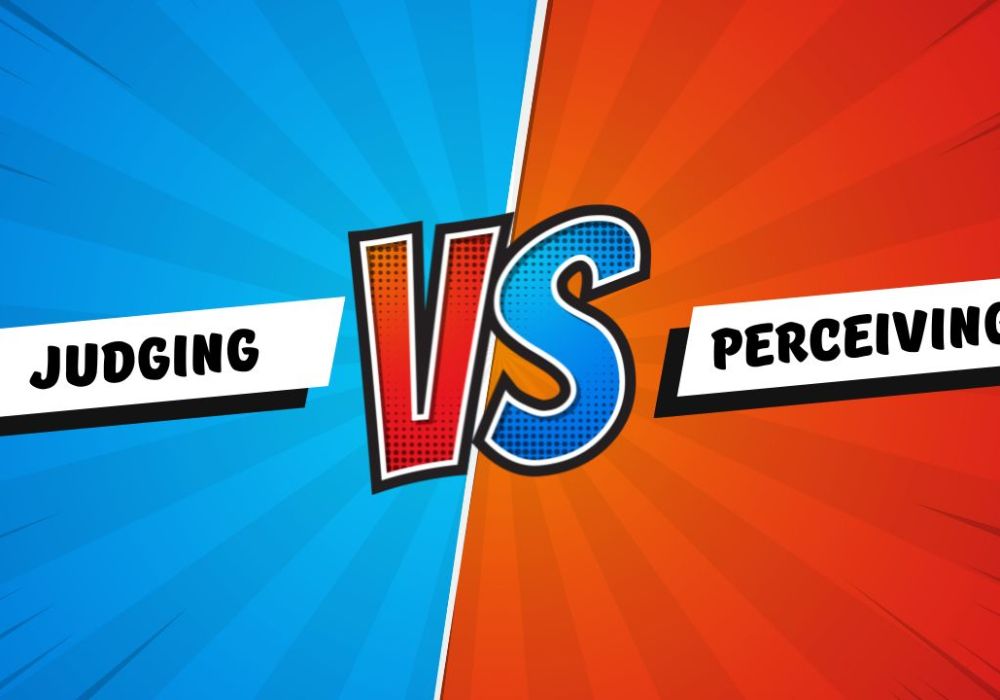Jung identified the initial E-I, S-N and T-F scales and then Isabel Briggs Myers and her mother Katharine Cook Briggs added that final scale, Judging vs Perceiving. But why did they come up with it, and what does it really mean? Well, let’s hear it directly from Isabel Briggs Myers, what did she actually say? So, let’s start with what it doesn’t measure. It’s often seen simply as ‘messy vs tidy,’ but that is not the case, (there are tidy ‘P’s and messy ‘J’s) nor would it be worth of study or taking seriously that were the case.
So, what it measures according to the authors, is not how folks feel, or what they think inside, it is rather what they project to the world, how other people actually experience them. Isabel Briggs Myers: “What we have aimed to do is to describe the consequences of each preference as far as we could observe or infer them.” So, it is about what people experience, do they observe a structured and planned existence, everything decided early, or a more spontaneous and flexible approach. She added that “the J or P at the end of the formula [the type letters] always describes outer behaviour,” and so inferences could be made about type from that behaviour, but that these inferences are of course dependent on the other factors.
An example? OK, let’s hear from Isabel Briggs Myers again with her own example: ExFJs are seen as “preferring matters decided and settled” but without necessarily being the one “doing the settling.” They are seen as “persevering, conscientious, orderly even in small matters and inclined to expect others to do the same.” So, when we experience or observe the Judging and Perceiving factors in an individual it is about what they show to the world. Listen to how Isabel describes it, and remember it was her scale: “This preference makes the difference between the judging people who run their lives and the perceptive people who just live them. Both attitudes have their merits. Either can make a satisfying way of life if we are able to switch over temporarily to the opposite attitude when we really need it.” Such an interesting take, the difference between those who “run their lives,” and those “who just live them!” And demonstrating the point made below, we do not have to always be in Judging or Perceiving mode.
I worked with an ENFJ colleague, really organised, loved a plan and ticking off lists, yet she recorded, on one type derivative assessment, ENFP. When we did an item analysis, what swayed her to ‘P’ preference was the questions around her weekend, do you plan, are you clear what you will be doing, etc. Her response, “only someone really sad would plan their weekend, I’m not at work!” So, we make an assessment based on what we observe, what we experience but it can and does change, it is in part situational. Sure, we will have a natural predilection, but it’s best not to make a quick assessment based on one situation.
It also plays the important function, as we know, in working out dominant scales, with individuals either having a dominant Judging function, (Thinking or Feeling) or a dominant Perceiving function, (Sensing or Intuitive) which helps us better understand them. Which is why Isabel Briggs Myers concluded that, “the inclusion of the J–P preference in the theory is therefore convenient as well as necessary.”
So, back to our question, what do we know? Well, firstly that it is not about order vs chaos, sloppiness vs neatness. But that there are real differences in Judgers and Perceivers, these differences are in how we experience each other, and the clues will be in in their external, observed, experienced behaviour, either a preference for a plan, getting to closure, needing some predictability and structure, vs a more spontaneous approach, happy to see what happens, and actually getting energised by that approach. A colleague was considering if we could determine the Judging vs Perceiving dichotomy in one single question. His answer is simplistic, but very interesting. He posited: “When something needs to get done, do you crack on and do it and then chill, or chill first then get to it later?” Sure, it doesn’t tell the whole story, but it is what he “observed and inferred,” in his ENTP boss, as Isobel Briggs Myers suggested.

